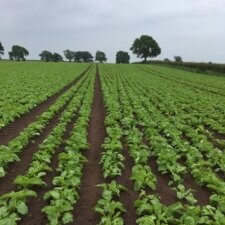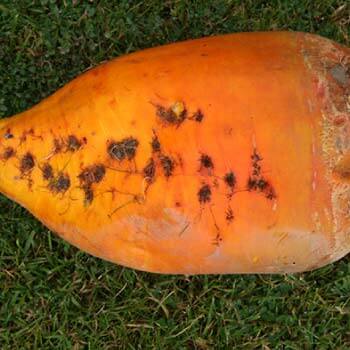Why use Fodder Beet?
Fodder Beet, a cross between mangels and sugar beet, is potentially the highest yielding winter forage options available to farmers currently. It is an attractive option with its palatability, digestibility and very good disease tolerance. It aims to combine the ease of harvest of mangels with the high dry mater yields and high sugar levels of sugar beet.
It is a long growing-season crop which requires a high level of care in establishment. Farmers who grow fodder beet use a precision drill to ensure the plants are evenly spaced in rows ready for harvesting. When drilling like this, pelleted seed is required to fit the drill cups.

Key benefits of Fodder Beet
- Spring sown crop ready to feed in Autumn & Winter
- High yield potential (25 t DM/ha+), so you need less land to grow feed for the same number of animals.
- High ME value (12-13 MJ ME/kg DM)
- Extremely high utilisation (typically 90%), so less wastage for improved animal performance.
- Relatively low cost c/kg DM at high yields.
- Unaffected by most brassica diseases.
- Versatility.
Choosing the right Fodder Beet
It's important to select the correct fodder beet variety to fit your farms requirements.
Our range of Fodder Beet varieties have been bred to be grazed in-situ, or be lifted and fed whole or chopped.
Fodder Beet Sowing & Management
Fodder beet demands good management to reach its potential, and care must be taken with animal feeding. Find out more on Fodder Beet sowing & management
Estimating Fodder Beet Yield?
Fodder beet yield is very difficult to correctly estimate! For an accurate assessment at least 8 separate yield measurements are required per paddock, including a dry matter % analysis.
Geronimo Fodder Beet
A newly released mono-germ fodder beet originating from France. It has a yellow – orange tankard shaped bulb that sits approximately 45% above the ground.
It is a high yielding variety with medium dry matter content at 15-17% DM, with very good tolerance to the diseases Rhizomana, Ramularia and Mildew.










